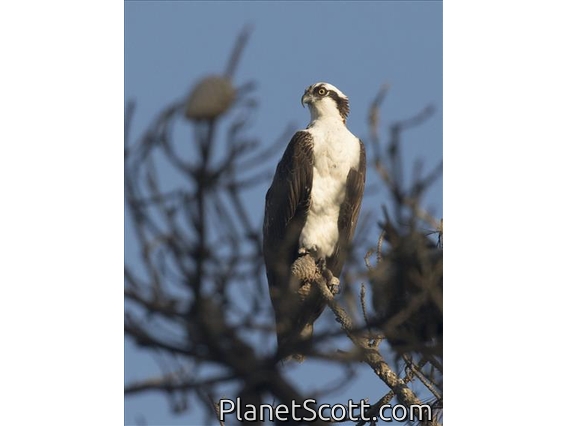Osprey (Pandion haliaetus)

Osprey (Pandion haliaetus)

Osprey (Pandion haliaetus)

Osprey (Pandion haliaetus)



×




Osprey (Pandion haliaetus)

Osprey (Pandion haliaetus)

Osprey (Pandion haliaetus)
About Osprey (Pandion haliaetus)
- Kingdom: Animals
- Phylum: Chordates
- Class: Birds
- Order: Hawks, Eagles, Kites, and Allies
- Family: Osprey
The osprey, historically known as sea hawk, river hawk, and fish hawk, is a diurnal, fish-eating bird of prey with a cosmopolitan range. It is a large raptor, reaching more than 60 cm (24 in) in length and a wingspan of 180 cm (71 in). It is brown on the upperparts and predominantly greyish on the head and underparts.
Source: Wikipedia
Lifelists
Trips
- Around The World in 66 Days
- China Solar Eclipse
- Colombia - Santa Marta
- Costa Rica
- Cuba
- Dominican Republic
- Ecuador
- Indonesia
- Indonesia
- Japan
- Kenya Solar Eclipse
- Lesser Antilles
- Mexico
- Mexico, Baja California Sur
- Mexico, Nayarit
- Mexico to Panama
- Mexico, Veracruz
- Morocco
- Moving the Car
- Newfoundland
- Panama
- Puerto Rico
- San Francisco 2007
- Texas
- Uganda and stops between
- Western Australia
Visits
-
2000-06-06
Point Reyes National Seashore, United States of AmericaCame flying past us near arch with a fish in its talons, and then circled around specially to squawk at us. -
2001-03-13
Winter Haven - Cleveland Indians Spring Training, United States of America -
2006-11-11
Sani Lodge, Ecuador -
2007-06-14
Cape May National Wildlife Refuge - Deleware Bay, United States of America -
2007-07-24
Lake Merced , United States of America -
2007-10-11
La Mancha, Mexico -
2008-01-08
Singayta, Mexico -
2008-02-25
San Jose del Cabo - Estuary, Mexico -
2009-01-22
Cay Caulker, Belize -
2009-02-25
Corcovado National Park - La Sirena, Costa Rica -
2009-03-02
Isla Boca Brava, Panama -
2009-03-18
Mogue, Panama -
2009-07-14
Sai Kung Peninsula, Hong Kong -
2010-06-21
Cape May Point State Park, United States of America -
2011-07-10
Santa Fe River, United States of America -
2012-04-14
Pier 94, United States of America -
2012-05-21
Donner Camp Picnic Area, United States of America -
2012-07-09
Tamarack Lake, United States of America -
2012-07-12
Yellowstone National Park, United States of America -
2012-07-13
Grand Teton National Park, United States of America -
2013-01-24
Nam Cat Tien National Park, Vietnam -
2013-01-29
Kratie, Cambodia -
2013-02-06
Ko Tao, Thailand -
2013-02-16
Namieri National Park, India -
2013-02-19
Periyar Wildlife Sanctuary, India -
2013-03-23
Coyote Point County Park--harbor and marsh, United States of America -
2013-04-16
Aransas NWR (CTC 037) (Aransas Co.), United States of America -
2013-04-18
Galveston Island, United States of America -
2013-11-03
Sibiloi National Park, Kenya -
2014-01-21
Jimani, Dominican Republic -
2014-01-22
Laguna de Oviedo, Dominican Republic -
2014-04-06
Delta Meadows State Park, United States of America -
2014-08-23
MacKerricher SP, United States of America -
2015-01-20
Arrowhead Marsh, United States of America -
-
-
-
-
-
-
-
-
-
2017-01-01
Mabamba Swamp, Uganda -
-
-
-
-
-
-
-
-
-
-
-
-
-
-
-
-
-
-
-
-
-
-
-
-
-
-
-
-
-
-
-
-
-
-
-
-
-
-
-
-
-
-
-
-
-
-
-
-
-
-
-
-
-
-
-
-
-







